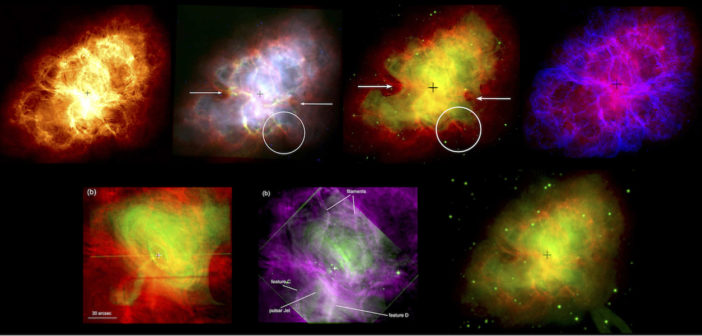Planning on watching fireworks tomorrow? Here’s an astronomical firework to help you start the celebrations! A new study has stunningly detailed the Crab Nebula (click for a closer look), a nebula 6,500 light-years away thought to have been formed by a supernova explosion and the subsequent ultrarelativistic wind emitted by the pulsar at its heart. Led by Gloria Dubner (University of Buenos Aires), the authors of this study obtained new observations of the Crab Nebula from five different telescopes. They compiled these observations to compare the details of the nebula’s structure across different wavelengths, which allowed them to learn about the sources of various features within the nebula. In the images above, the top left shows the 3 GHz data from the Very Large Array (radio). Moving clockise, the radio data (shown in red) is composited with: infrared data from Spitzer Space Telescope, optical continuum from Hubble Space Telescope, 500-nm optical data from Hubble, and ultraviolet data from XMM-Newton. The final two images are of the nebula center, and they are composites of the radio image with X-ray data from Chandra and near-infrared data from Hubble. To read more about what Dubner and collaborators learned (and to see more spectacular images!), check out the paper below.
Citation
G. Dubner et al 2017 ApJ 840 82. doi:10.3847/1538-4357/aa6983

